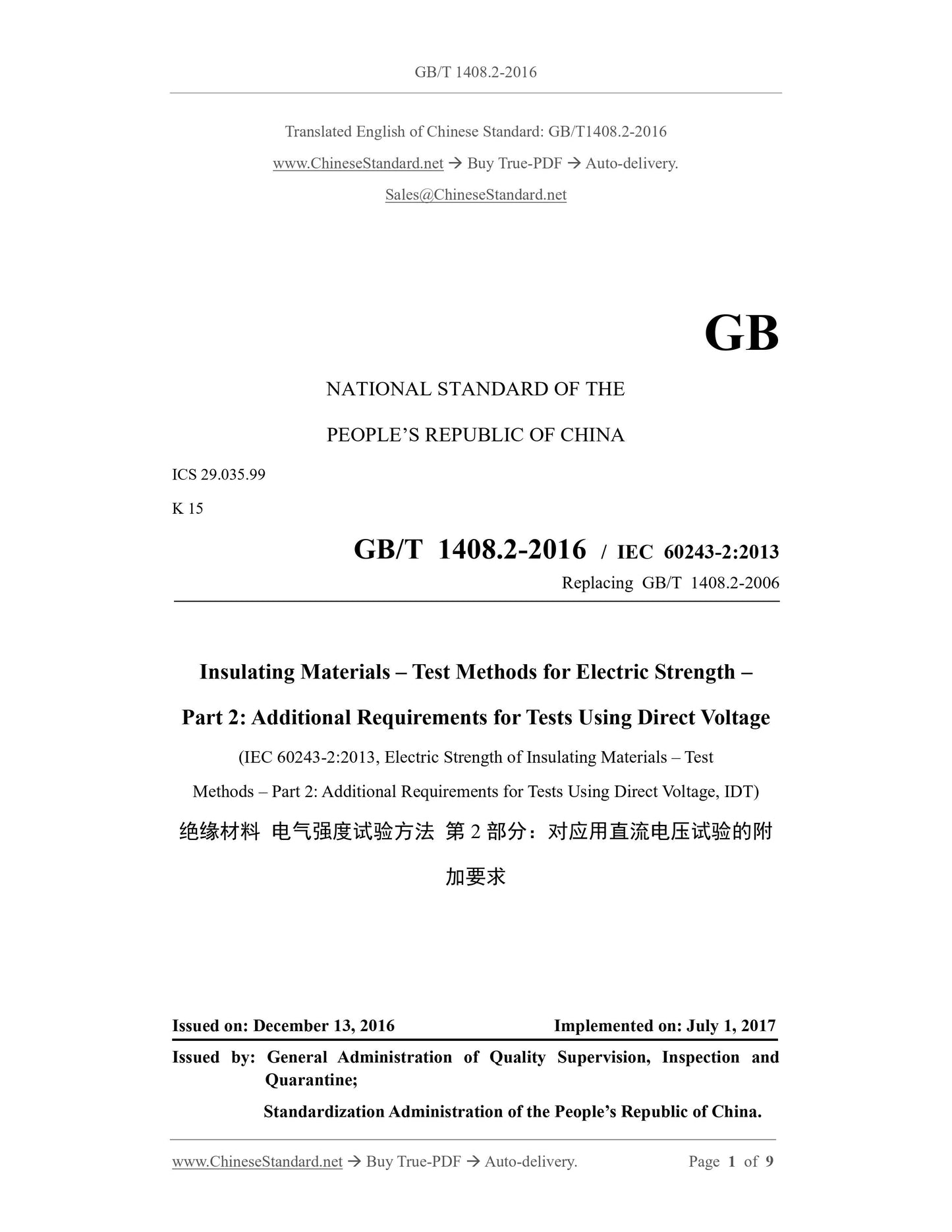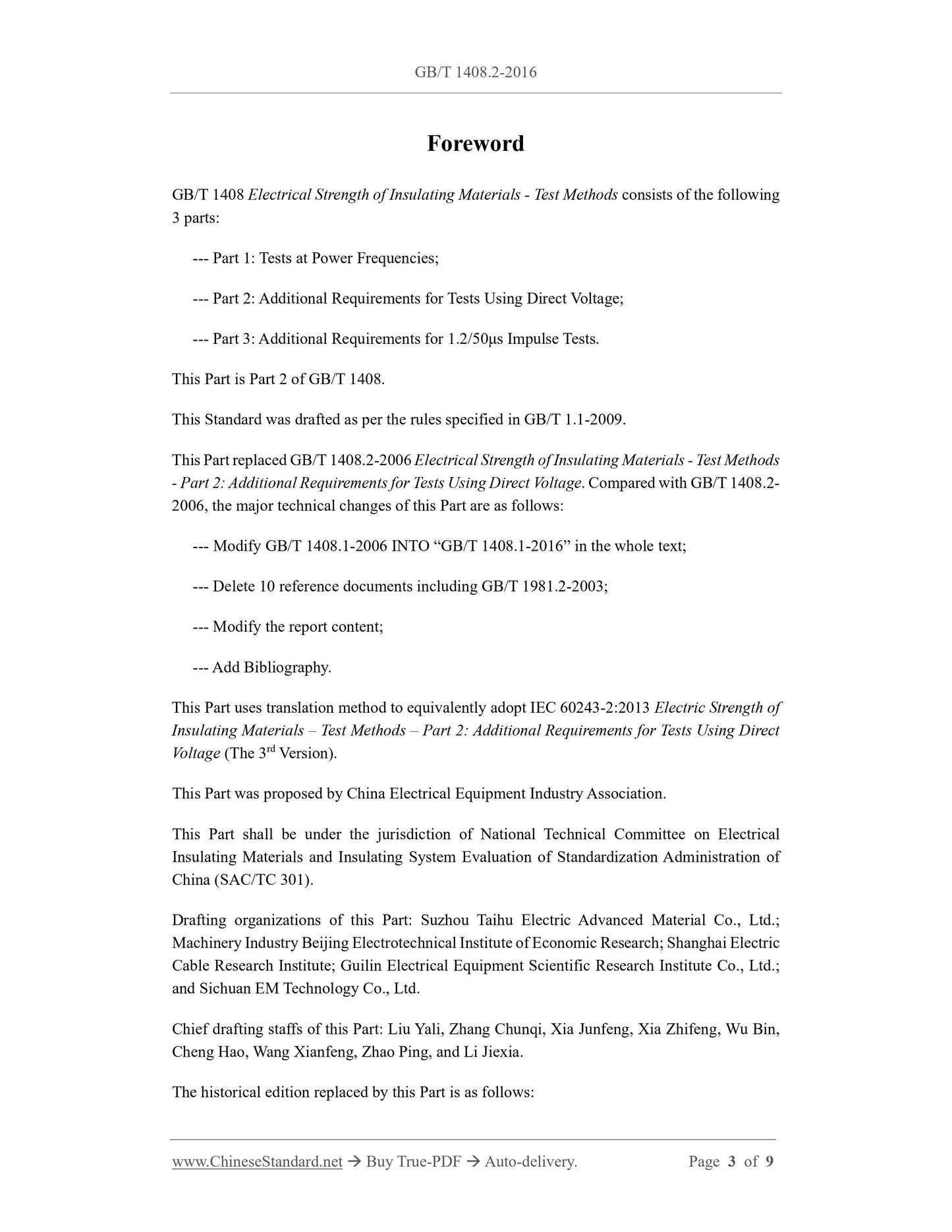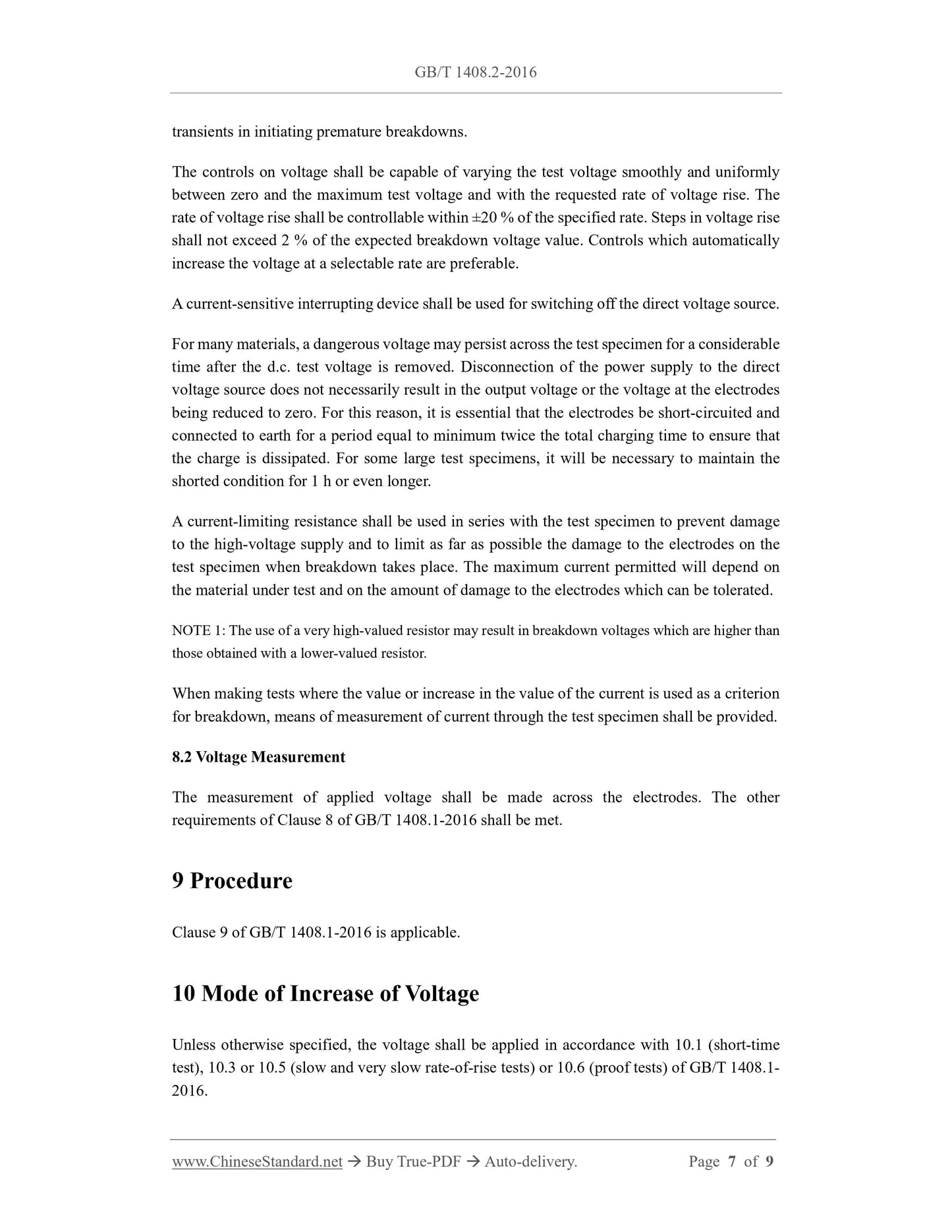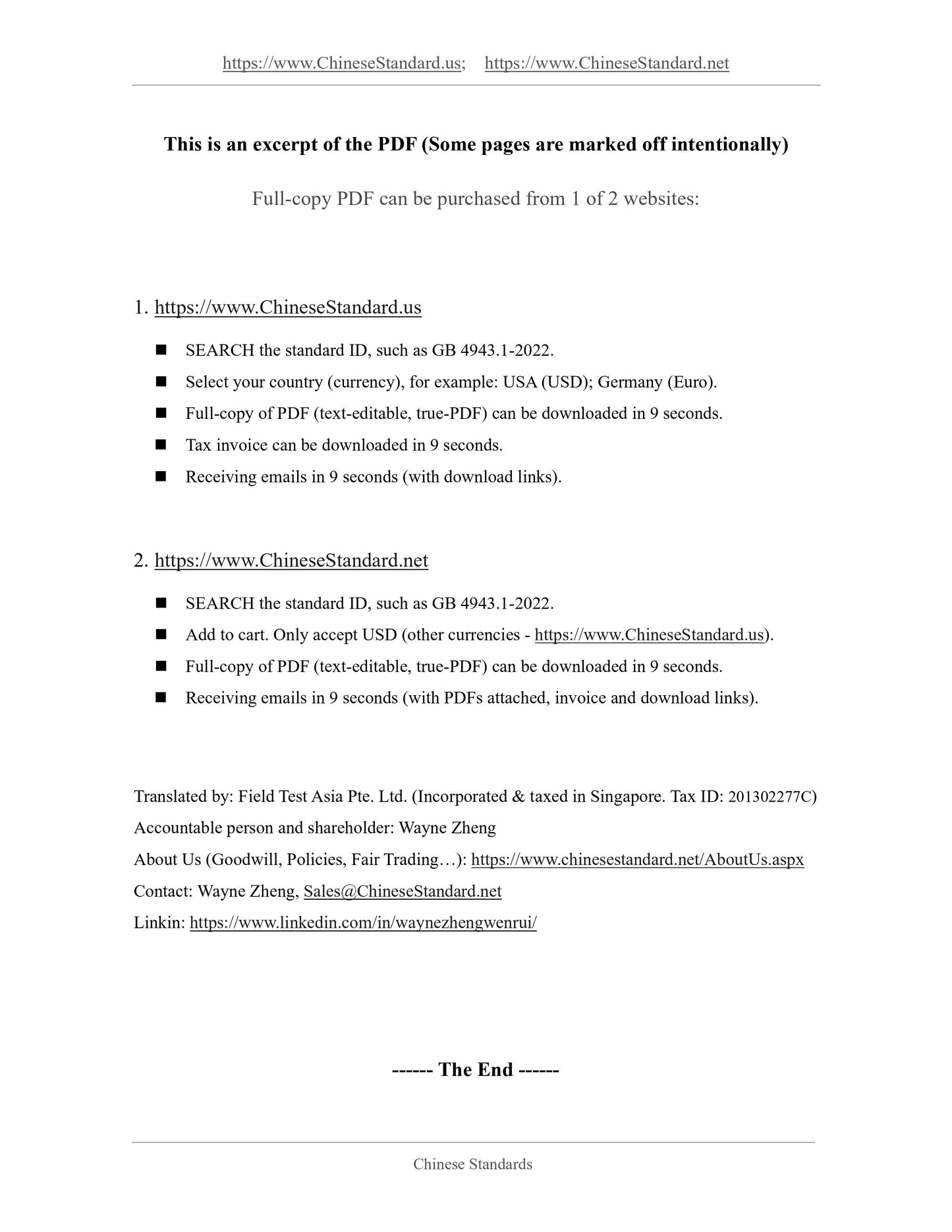1
/
of
6
www.ChineseStandard.us -- Field Test Asia Pte. Ltd.
GB/T 1408.2-2016 English PDF (GB/T1408.2-2016)
GB/T 1408.2-2016 English PDF (GB/T1408.2-2016)
Regular price
$95.00
Regular price
Sale price
$95.00
Unit price
/
per
Shipping calculated at checkout.
Couldn't load pickup availability
GB/T 1408.2-2016: Insulating materials -- Test methods for electric strength -- Part 2: Additional requirements for tests using direct voltage
Delivery: 9 seconds. Download (and Email) true-PDF + Invoice.Get Quotation: Click GB/T 1408.2-2016 (Self-service in 1-minute)
Newer / historical versions: GB/T 1408.2-2016
Preview True-PDF
Scope
This Part of GB/T 1408 gives requirements additional to those in GB/T 1408.1 for thedetermination of the electric strength of solid insulating materials under direct voltage stress.
Basic Data
| Standard ID | GB/T 1408.2-2016 (GB/T1408.2-2016) |
| Description (Translated English) | Insulating materials -- Test methods for electric strength -- Part 2: Additional requirements for tests using direct voltage |
| Sector / Industry | National Standard (Recommended) |
| Classification of Chinese Standard | K15 |
| Classification of International Standard | 29.035.99 |
| Word Count Estimation | 6,638 |
| Date of Issue | 2016-12-13 |
| Date of Implementation | 2017-07-01 |
| Older Standard (superseded by this standard) | GB/T 1408.2-2006 |
| Regulation (derived from) | National Standard Notice No.31 of 2016 |
| Issuing agency(ies) | General Administration of Quality Supervision, Inspection and Quarantine of the People's Republic of China, Standardization Administration of the People's Republic of China |
Share











